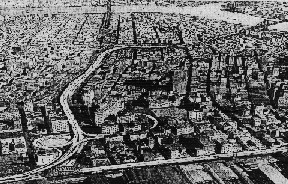
"when you operate in
an overbuilt metropolis, you have to hack your way with a meat ax."
- Robert Moses
the lower manhattan expressway (never built)

excerpt from the 1955 Joint Study of Arterial Facilities by the Triborough Bridge and Tunnel Authority (TBTA):
"The proposed expressway in the vicinity of Canal Street would be an elevated through-route with direct connections to the West Side Highway, the Holland Tunnel, and the Williamsburg and Manhattan bridges....
The expressway would begin at the West Side Highway as a six-lane elevated roadway. It would follow Canal Street about two blocks, then curve north and cross over the Holland Tunnel entrance plaza.
East of the Holland Tunnel, the widened right-of-way would follow the north side of Watts Street, continuing eastward as an elevated eight-lane route along the north side of Broome Street. Near Centre Street, the outer lanes of the highway would descend and pass under Elizabeth Street, continuing eastward in an open-walled cut to the Williamsburg Bridge Plaza. All streets except Mulberry and Mott would be carried across bridges over the depressed highway. At Suffolk Street the alignment would meet Delancey Street.
Near Elizabeth Street, there would be included an elevated spur to the Manhattan Bridge. This spur would cross the Third Avenue Elevated Rapid Transit structure (which was removed later in 1955) and parallel it along the Bowery, widened on the east side between Delancey Street and Canal Street. It would then turn southeastward to connect directly with both decks of the Manhattan Bridge.
The estimated cost of the Lower Manhattan Expressway would be about $72,000,000, including about $28,000,000 for real estate."
The elevated expressway was to have been constructed within a 250-to-350 foot-wide right-of-way, with a clearance of 50 to 60 feet between the edge of the expressway and the nearest buildings.
Exits on the LOMEX:
BEGIN: Holland Tunnel
EXIT 1: West Side Highway (NY 9A)
EXIT 2: Sixth Avenue / Avenue of the Americas
EXIT 3: Spur to Manhattan Bridge and Canal Street
EXIT 4: Delancey Street / Essex Street / Avenue A
END: Williamsburg Bridge
"The route of the proposed
expressway passes through a deteriorating area with low property values due
in considerable part to heavy traffic that now clogs the surface streets. Construction
of the expressway will relieve traffic on these streets and allow this locality
to develop in a normal manner that will encourage improved housing, increased
business activity, higher property values, a general rise in the prosperity
of the area, and an increase in real estate tax revenues. This has been the
experience again and again in localities in the city where modern parkways and
expressways have been built. The Grand Central Parkway and the Belt Parkway
have produced these results, and it is now happening along the Long Island Expressway.
There is every reason to expect that it will also happen in the case of the
Lower Manhattan Expressway."
- Robert Moses
the gowanus expressway
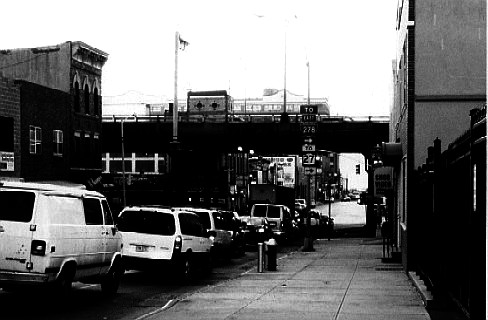
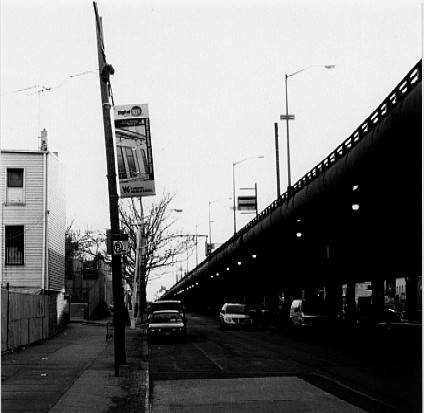
"the construction of
the gowanus parkway, laying a concrete slab on top of lively, bustling third
avenue, buried the avenue in shadow, and when the parkway was completed, the
avenue was cast forever into darkness and gloom, and its bustle and life were
forever gone."
- Robert A. Caro
the cross bronx expressway
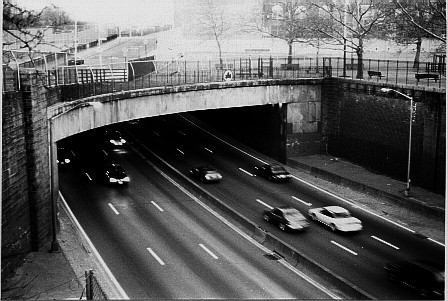
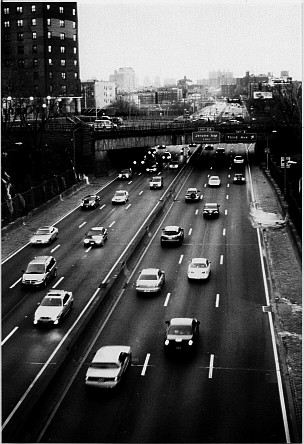
"one mile, the most expensive
mile of road ever built, cost $40,000,000."
- Robert A. Caro
the brooklyn battery bridge (never built)
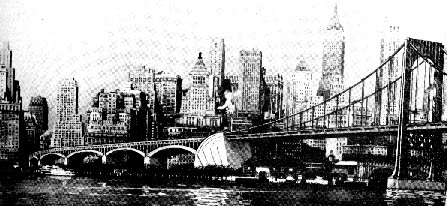
"the proposed bridge
anchorage in battery park... would be a solid mass of stone and concrete equal
in size to a ten-story office building. the approach ramp linking the bridge
to the west side highway... would actually be a road wider than fifth avenue,
a road supported on immense concrete piers, and it would cross the entire park
- the entire lower tip of manhattan island - and curve around the west side
of the island almost to rector street at heights ranging up to a hundred feet
in the air. not only would anchorage and piers obliterate a considerable portion
of battery park, they - and the approach road - would block off much of the
light not only from what was left of the park but also from the lower floors
of every large office building they passed."
- Robert A. Caro
the verrazano-narrows bridge
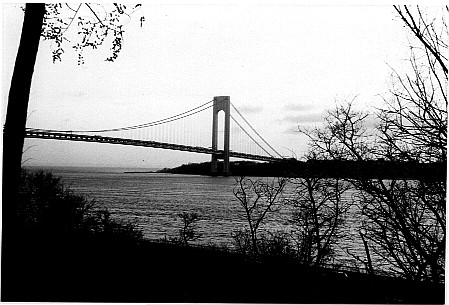
"no suspension bridge
anywhere in the world would be as long (or expensive) as the verrazano-narrows
bridge; it would be the longest such bridge ever built, its towers so far apart
that in designing them allowance had to be made for the curvature of the earth:
their tops are one and five eighths inches further apart than their bases. there
would be enough wire in the verrazano's cables to circle the earth five times
around at the equator or reach halfway to the moon, enough concrete in its anchorages
to pave a single-lane highway reaching all the way from New York to Washington,
and more steel in its towers - taller than seventy-story skyscrapers - and girders
than was used in the construction of the empire state building."
- Robert A. Caro
the unisphere
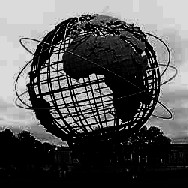
a souvenir from the last great american world's fair
triborough
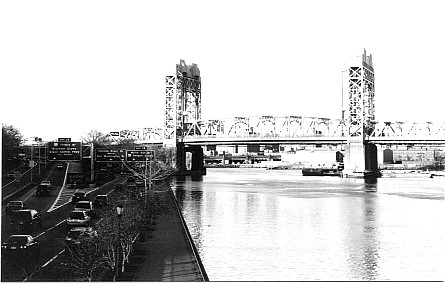
"the empire had its own
flag and great seal, distinctive license plates and a self-contained communications
network... triborough had its own fleets, of yachts and motorcars and trucks,
and its own uniformed army"
- Robert A. Caro
traffic
"cities are created by
and for traffic. a city without traffic is a ghost town."
- Robert Moses

Back Bio Bloodninja Calculus C++ Food Liquid Courage